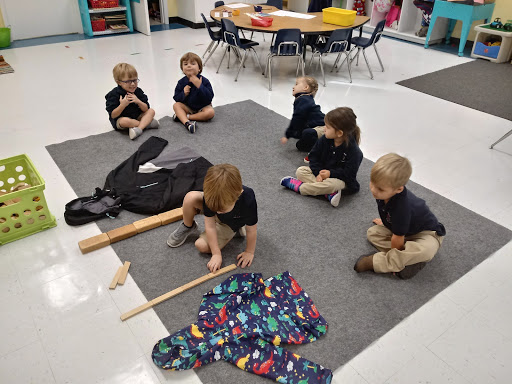We started our investigation about balls and the children are excited. They play with them in many different ways. They throw them, catch them, kick them, and roll them with seemingly endless delight. Children learn how natural forces, such as gravity and friction, affect the movement of balls. They enjoyed making balls, marbles, and other rolling objects change speed and direction. Like a ball, the boys and girls took turns rolling their bodies. This led to two questions. First,“How did we make our bodies roll?” Secondly, “ What do you think it takes to make balls roll?” We discussed how using force from our muscles made our bodies roll and we needed to use force or gravity for a ball to roll. The children paired up with each other using force to roll the ball back and forth. They had a ball!
We also talked about gravity and used a ramp to roll different balls. I asked the boys and girls “Do you think some balls roll faster than others?” We recorded and discussed our predictions. Using a golf ball and a soccer ball we tested out our theories. The boys and girls were amazed with the results. Putting a ramp in the classroom gives the children a chance to interact not only with me, but the other children as well. This type of play influences the way children approach learning and influences other aspects of their cognitive development.
Valentine's Day is approaching and we’ve been making decor for our classroom. Using a golf ball and paint each child designed their own heart. As children draw, paint, and construct they make new discoveries and integrate what they are learning.


























